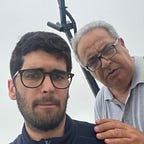Beirut, The Violent Roar
On August 4th, 2020, shockwaves roared to places as far reaching as the earth’s Ionosphere, leaving residents of Beirut to watch in horror a screaming wave of violence tear a chunk out of their beautiful capital, leaving thousands injured, hundreds dead, and hundreds of thousands homeless. One of the largest man made, non-nuclear explosions in the record of mankind went off leaving Beirut paralyzed.
The blast was detected by seismic stations about 500 km away and was detected by sensors all around the globe such as in Germany and Tunisia. A scorching wave of terror swept through the city of Beirut causing a tremor to the earth’s highest layer, the Ionosphere. It is a rare occurrence when the earth’s Ionosphere is shaken, only rarely happening when volcanoes erupt or nuclear testing occurs, making the Beirut blast a warning to countries all over the globe to not allow such a tragedy to be repeated. The blast is unique in the sense that it shot overhead at a velocity of 0.8 km per second and flew into space at about 50 km overhead. To give you a comparison, the technique used to measure the Beirut blast is the same exact technique used to measure when nations perform rogue nuclear testing.
Scientists explaining the Beirut blast put it in the ballpark of a low yield nuclear bomb. What harnessed all this power was 2,700 tons of ammonium nitrate, known commonly as fertilizer, but also an explosive agent. That is the equivalent of 1.1 kilotons of TNT. Researchers compare this amount of destructive power to the eruption of the Asama volcano in Japan, which left significant changes in the earth’s Ionosphere. But of course, the Beirut blast was far more impactful.
We should allow the Beirut blast to serve as a reminder as something never to be repeated again, anywhere on earth. The Beirut blast only added salt to the wound of a fractured economy on the brink of collapse.
